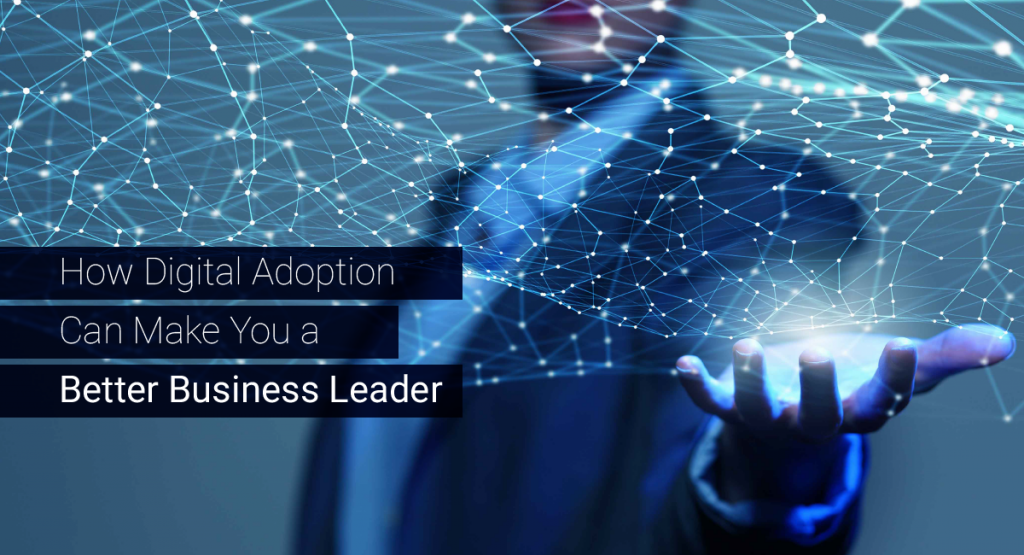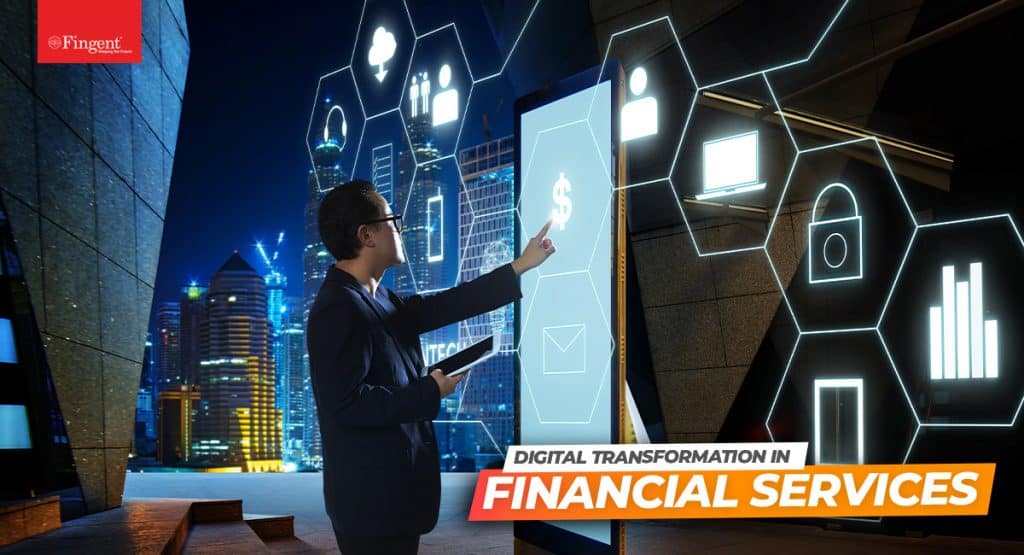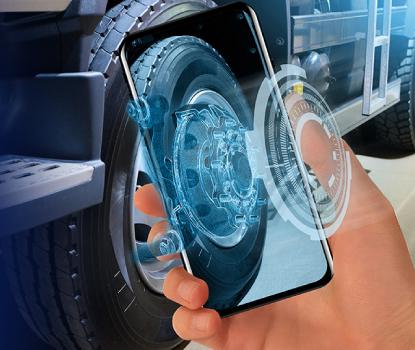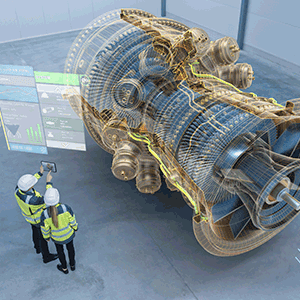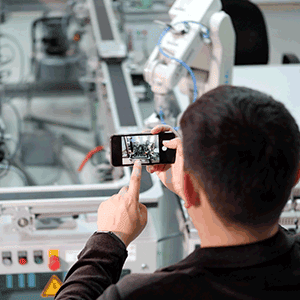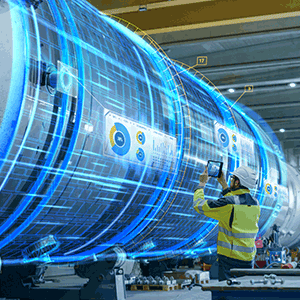Tag: Digital Disruption
What comes under the scope of digital transformation? How does it differ from digitization and digitalization?
Digital Transformation vs. Digitization vs. Digitalization: Decoding the Concepts
The term digital transformation captivates every enterprise leader. Given the hype from software vendors and analysts, it’s hard to find an enterprise technology today that doesn’t self-endorse as a critical component of digital transformation.
While everyone seems to agree that digital transformation involves employing technology to accomplish business goals, there are differences of opinion among companies on what digital transformation is and isn’t. For a few, it means getting into e-commerce or moving into a cloud database. Some consider digital transformation as the adoption of advanced technologies like the Internet of Things or Artificial Intelligence to become more competitive.
Read more: Why Business Leaders Must Embrace Digital Adoption
With a lot of uncertainty prevailing on digital transformation’s scope and purpose, let’s take a closer look at what digital transformation means and not.
Digitization, digitalization, and digital transformation: Don’t confuse them
An excellent example of digitization is the conversion of paper-based forms and documents into electronic spreadsheets. Digitization enables businesses to cut costs to become more efficient. However, that’s the only competitive advantage it offers, either getting better or cheaper. Exactly what Microsoft Office did during its initial days by helping us compose and save documents easily.
With Big Data, Cloud Computing, and DevOps becoming ubiquitous, digitalization advanced businesses’ need to expand their online presence. A field service provider who never relied on software to run her company is now using an FSM suite to manage accounts, send invoices, create and schedule work orders, and generate reports. A digital strategy- such as a website or a mobile app- is inevitable for a business to stay connected with its customers in this digital world.
In addition to cost reduction and differentiation, digitization and digitalization are intended to simplify what a business does without drastic augmentation.
Digital transformation shifts the focus from the engineering mindset to the experience mindset. Peloton bike that offers an immersive cardio experience is a recent example of digital transformation. Peloton’s latest $2300 exercise bike streams customized workout content to its users through the large 22″ touch screen attached to it. Peloton applies user data tracking, engagement, and experience to replicate the studio-grade experience. This appeals to a vast customer base.
When most of the outdoor gyms were shut down due to the COVID-19 pandemic, Peloton transformed the indoor exercise experience for their customers with personalized content streamed live as well as on-demand.
“Digital transformation can simply be defined as the application of new and emerging technologies to make fundamental changes to your business model.”
Read more: 4 Key Questions to Ask When Your Business Embarks on Digital Transformation
Digital transformation: Three areas of focus
“It’s not the strongest of the species that survives, nor the most intelligent, but the one most responsive to change,” wrote Charles Darwin in 1809. For businesses, keeping up with the change is no longer an option but a condition. How can business leaders seize the opportunity and lead the change?
Read more: Fingent Speaks: What it Takes to Build a Successful Digital Transformation Strategy
1. Build and deliver customer-centric experiences
Digital transformation reimagines and redefines the customer experience. It isn’t easy to find a sector that is not disrupted by technology today.
Dairy farming, one of the most traditional industries that still follows farming practices passed down from generation to generation, is now embracing emerging technology to get smarter.
“Connected cows” – cows wearing pedometers and Fitbit-style necklaces to monitor feeding habits, acid monitors to detect digestive problems, and other cow-monitoring mechanisms to oversee milk production, smooth calving process, and ensure cattle health is an example of digital transformation in a traditional industry. The “connected cows” farming has led to greater crop yields and simplified the management of larger livestock herds.
Doesn’t emerging technology improve the farmer’s experience who first checks out her mobile or PC before heading to the stable in the morning?
2. Make the best of advanced technology
The early IT activities were focused on cutting costs and reducing human efforts by building relatively simple applications. With the growth and complexity of computing platforms and software applications, businesses have been showing the hunger to find the next big thing in technology that can enhance not just what they deliver but how they deliver. The ubiquitous digital assistants such as Apple’s Siri, Google Now, and Amazon’s Alexa can understand and recognize the context and enable businesses to improve customer interactions by not just being responsive but proactive.
Oncologists and pathologists use machine learning to discern patterns in symptoms to detect cancerous tissues or analyze bodily fluids. Mixed reality (MR) technology that breaks the barrier between physical and digital worlds is now getting mature enough to take digital data and place it in our actual environment. Ohio-based Case Western Reserve University uses Microsoft HoloLens devices to study human anatomy where an entire class can view the same life-sized 3D image at once. IoT applications that gather data continuously are programmed to improve the quality and productivity of life, society, and industries.
Robotic Process Automation, Blockchain, Augmented and Virtual realities, Artificial Intelligence– are all emerging technologies that enable digital transformation by enhancing customer experience. With numerous open-source libraries made available by tech providers like AWS, IBM Watson, Google Cloud, and various other vendors, it’s now possible for anyone to experiment and create POCs free of cost. The democratization of technology accelerates digital transformation.
Read more: Digital Transformation in Financial Services: All You Need to Know
3. Culture, organizational structure, and processes
“Transformation isn’t a plan or program; it’s a chain reaction of experiments,” says Joris Merks-Benjaminsen, Head of Digital Transformation at Google.
Fostering an environment of openness, business leaders can create a culture that allows ideas to flourish. Fluid structures, tools, and workplaces encourage employees to think outside the box and embrace change. Predictive models solely based on past experiences will only have a short-term impact. If you can offer more flexibility in the design and logic of a business case, people are more likely to invest their time, effort, and skills in things that matter for transformation.
Enterprise leaders can make way for transformation by:
- Supporting people focus on the future by establishing a stable long-term vision that includes well-defined challenges for them to work on.
- Implementing tools that facilitate cross-team collaboration and encouraging everyone to connect irrespective of hierarchy or position in the org chart.
- Adopting a “test and learn” approach, including “learning from mistakes” and rewarding experimentation. Small gestures of appreciation like awards and incentives inspire employees to practice acts of innovation.
Passionate leadership that cares about the customer and stimulates forward motion by encouraging entrepreneurship will successfully ride the transformation wave.
What digital transformation means today
Before Netflix, we used to scour shop racks in search of tapes, discs, and DVDs. Today, Netflix has transformed our content consumption experience by leveraging AI-driven content recommendations, live streaming, and endless libraries of digital content served upon our personal devices, topped with personalized suggestions, reviews, and attractive subscription options.
Digital transformation is not about how your business can sell more products to more people. It’s about making your customers spend more than they would otherwise. Rather than repositioning your brand as a seller of your products, you should aim at transforming to be a solution provider that helps solve your buyers’ woes and enhance their experience. If the first wave of transformation brought businesses online, the current wave of transformation requires businesses to innovate their selling process and offer new services and products that can solidify customer loyalty.
Need help with your digital transformation goals?
Fingent is setting up practices to actively leverage third-party developer innovation to reduce the time-to-market for our customers and us. One of our products, InfinCE, is empowering small businesses to achieve digital agility without the need to own infrastructure or an IT practice. ReachOut, another product, has digitized several field service businesses through automation of manual operations, digital inspection forms and checklists, and intelligent scheduling.
Fingent custom software development experts are highly experienced in helping businesses solve their digital transformation challenges. We have partnered with businesses worldwide in their digital transformation projects. We can help you define your vision and create robust digital transformation plans that enable your business to transform and grow. To take advantage and get the ball rolling, please get in touch with Fingent.
Stay up to date on what's new

Featured Blogs
Stay up to date on
what's new



Talk To Our Experts
Attaining Digital Transformation Success with AIOps
Your IT infrastructure is the key pillar of your organization and this dependency will only increase steadily in future. You need help to cope with this massive dependency, and digital transformation will play a crucial role in this. Now, in order to make your digital transformation successful, you need something powerful, radical and looking up to the next-gen. That is what AIOps is.
Related Reading: How Digital Innovation Transformed Today’s Business World
This blog will discuss how organizations can apply AIOps to drive digital transformation and make your IT operations a success for the future of your business.
Defining AIOps and Its Crucial Role
AIOps was initially used by Gartner in 2017 as an acronym for Artificial Intelligence for IT operations. AIOps is a beautiful synchronization of machine learning, analytics, and AI. These technologies are brought together in order to derive meaning from massive datasets. It pools all kinds of data gathered from different sources and uses advanced AI and ML operations to enhance a wide range of IT operations. The insights derived are far beyond what human analysis could achieve.
As IT infrastructure is becoming progressively complex with the demands of digital transformation, this potential of AIOps is becoming critical to successful IT development. Traditional methods of managing your complex infrastructure could increase your costs, create maintenance issues and increase possibilities of slowdowns. AIOps can equip your IT teams to overcome such problems, trends, and slowdowns. It allows your teams to prioritize and focus on the most important information while AIOps reduces normal alert noises and identifies patterns automatically without human input.
Related Reading: How IT-as-a-Service Boost the Digital Transformation of Enterprises
In fact, AIOps is becoming a necessity for every organization. Gartner predicts that 30% of large enterprises will adopt AIOps by 2023. According to another research, AIOps platform market is expected to grow to $11.02 billion by 2023. Hence, the question larger organizations should ask themselves is not “if” they need to adopt AIOps, but “when.”
How is AIOps Driving Digital Transformation?
Since digital transformation includes cloud adoptions, quick change and implementation of new technologies, it requires a shift in focus. Instead of users struggling with traditional services and performance management strategies and tools, AIOps offers organizations a perfect model to handle digital transformation. It can help your team to manage the speed, scale, and complexity of changes, which are the key challenges of digital transformation.
Here are some essential steps to effective AIOps:
1. Act Fast
Timing is everything in business and hesitation in the adoption of technologies can set you back more than you can imagine. Even if you feel that you aren’t ready to adopt AIOps yet, read about it and familiarize yourself with the vocabulary and capabilities of AIOps. It will help you make an informed decision when it is the right time.
2. Start Small
All in or all out doesn’t necessarily apply to digital transformation. Starting small could actually prove beneficial to your organization. This would mean that you focus on what is practical and achievable. Your initial use cases could include application performance monitoring, dynamic baselining, predictive event management, and event-driven automation.
3. Restructure Your Team
Successful adoption of AIOps might require restructuring the roles of your team. This would ensure that the best resources are used for the right jobs. Also, identify experience gaps and fill those gaps by providing the necessary training.
Related Reading: Fingent Speaks: What it Takes to Build a Successful Digital Transformation Strategy
4. Leverage Available Resources
Your organization might already have data and analytic resources. Since these teams are already skilled in data management, their skill set can be effectively leveraged for AIOps.
5. Increase Proficiency by Developing Core Capabilities
Developing core capabilities such as machine learning, open data access, and big data can prove beneficial. For example, the massive amount of data generated by digital transformation can be overwhelming. Since the AIOps platform must support responsive ad-hoc data exploration and deep queries, developing this capability can also help you build up progress towards the use of AIOps.
6. Track Business Value
Make sure that the value of AIOps is tied to your overall business objective. The key performance indicators must correlate with best practices and should remain measurable. Ensure that your business is able to obtain a complete and referenceable history of such values.
What Is Your Plan of Action?
AIOps might be taking its first steps, but it is what will eventually drive your digital transformation with unmatched speed and stability. Selecting the right use cases might be challenging initially and might require significant process reengineering. Fingent top custom software development company, can help you get there. Call us to find out more.
Stay up to date on what's new

Featured Blogs
Stay up to date on
what's new



Talk To Our Experts
Stay up to date on what's new

Featured Blogs
Stay up to date on
what's new



Talk To Our Experts
Over the past couple of years, digitization has enabled technology-driven small companies to outclass established business houses worldwide. With industries ranging from taxi-services to banking, transforming digitally, more and more enterprises are realizing the importance of making digitization their number one priority. The tech-savvy consumer base, which consists of the population below the age of 30 and covers 50% of the global population, is considered to be the key driver behind this realization. Such folks have the rising affinity to expect every business organization they interact with to provide the fastest and most satisfying experiences each time. As a business, turning deaf ears to customer’s expectations can lead to unrevivable consequences. From AI to blockchain, IoT and RPA, the list of digital innovation you need to pay attention to are huge.
We thought this is the perfect time to show you the digital innovations that we believe will reshape businesses in the coming months and future years. Here are our top 5 picks from technologies that enterprises need to watch out:
Flexible Cloud Computing
When cloud computing became mainstream a couple of years ago, there was a rush from enterprises to build their technology competence on the cloud. This resulted in several businesses having their own private cloud ecosystems that supported their own limited digital innovations. Today, many available digital tools require a complex network of cloud resource. This has reshaped the cloud computing ecosystem which has now transitioned into intelligently connected networks that have Public, Private and Hybrid cloud partitions working in sync to help businesses derive value from technology running on these platforms.
Different IT workloads may need to be run simultaneously over multiple cloud platforms to achieve enterprise goals and this has resulted in the so-called Multicloud saga. This is one area which will see more developments and interest from the business community in coming years as the previous year saw major cloud service providers acquiring or developing solutions to club their multiple cloud ecosystems to serve client interests.
Related Reading: Find how a cloud platform like INFINCE can help businesses leverage technologies more efficiently.
Blockchain in Mainstream
The past couple of years saw considerable investments from the business community in the blockchain. We believe there will be mainstream applications coming out in future that will revolutionize areas such as data security, digital identity verification, and intelligent automation. Sectors such as BFSI, logistics, regulatory bodies, and government agencies have already started using blockchain to set up complex autonomous verification and validation systems that require minimal human intervention, thanks to the capacity of blockchain to be immutable.
In the coming years, more mainstream consumer-facing areas of businesses would be driven by blockchain based autonomous operational interfaces and it could set the stage for innovations akin to self-driving cars. Many technology companies would be coming out with mainstream solutions having blockchain essentials embedded into their core and these would further enhance business capabilities for enterprises worldwide.
Related Reading: Find how blockchain technology can transform the supply-chain industry.
Digital Modelling
While this concept has been around for a while, we think it will make more impact this year as more companies are investing in this front. The idea is to create a digital persona for every product or service business has to offer its customers. This persona would be used to arrive at choosing the right supporting digital enablers like data generators (sensors, IoT enabled devices, etc.) as well as the right decision path (data models and implementations of data science to arrive at success models). Such persona would be used to ascertain an offering’s readiness to the market, the cost required to maintain it viable, the processes and business models that need re-defining to support it and so on. The entire exercise though a bit complex will bring about a strategic advantage to adopters as their business offerings would be more aligned for digital success than competitors.
Related Reading: Digital innovation is transforming today’s business. Find how your business can benefit from digital transformation too.
Immersive Experiences
In future we will see consumer experiences moving to a more immersive phenomenon where almost everyone from a local retail shop to an e-commerce giant will offer interactive experiences courtesy of technology like augmented and virtual reality. Gartner says that by 2022, nearly 70% of all businesses would be using immersive customer experiences in some form on an experimental basis. Such immersive technology will find its way into numerous consumer-facing scenarios like demonstrations, virtual assistants, field services and so on. With gadgets supporting immersive experiences like smart glasses and wearables being available for very affordable prices, the consumer base requiring such experiences will grow tremendously in the coming years. The possibilities are limitless and businesses small or big can capitalize on this opportunity to improve their competence.
Related Reading: Check out the ongoing battle between AR and VR and find which technology has the potential to mainstream first.
Conversational Intelligence
Artificial intelligence is no longer a trend to watch out for because it has already gone mainstream over the last two years. Today, the focus should be on solutions that have been made available by harnessing the power of AI. One major solution that has gained attention now are conversational bots. From websites to major apps, a multitude of consumer-facing interactions is now handled by programmed bots that can interpret queries and respond intelligently.
Be it ordering food from a restaurant, booking a cab or even carry out a banking transaction, tech-savvy consumers are increasingly depending on personal digital assistants or bots to aid them in every step of the way. The proliferation of smart devices like smart home speakers, wearables and other IoT enabled home and personal electronic devices have created immense possibilities for a business to connect more effectively with end users. Today, you can ask your smart coffee maker to brew a coffee in the most precise variants of taste and smell without even having to touch the coffee maker. You can simply ask the personal assistant on your phone to do so.
Related Related: Find unconventional ways Artificial Intelligence is driving business value.
The top technologies mentioned above concludes that years to come is going to be a breakthrough year for several technological innovations. Business leaders need to hone their digital skills to keep pace with the rapidly growing market. On the positive side, most of these technology platforms or solutions come in affordable subscription basis and hence it is pretty much accessible to any enterprise despite their business size. However, the biggest differentiator for your success is the right technology advisory and implementation.
This is where our consultants at Fingent can become your best asset. With years of experience in empowering multiple businesses to achieve their digital aspirations, our world-class services can help you achieve your digital dreams seamlessly. Talk to us to know more about how we can help you embrace the above innovations and much more into your mainstream business operations.
Stay up to date on what's new

Featured Blogs
Stay up to date on
what's new



Talk To Our Experts
Digital Adoption is crucial for the success of an organization. Businesses understand this and are going full steam ahead in ensuring that they are completely equipped digitally. While the IT department is primarily hands-on with digital adoption, it is becoming increasingly clear that business leaders must also roll up their sleeves and get involved with the digital goals of the company. This blog will discuss why this is important and how it makes for better business leaders.
Digital Adoption
Digital adoption in the most elementary sense is to achieve a state of functioning where all the organization’s digital tools are used to their full capability. Digital Adoption also involves getting stakeholders, including customers and employees, to use these tools to the best.
If the company has a whole repertoire of digital tools, it doesn’t mean that they have successfully implemented digital adoption. It can only be a success if these tools are being used to their full capacity by the organization and its customers.
How Digital Adoption Makes You A Better Business Leader
Talking about the top executives in today’s organization, Dion Hinchcliffe, VP and principal analyst at Constellation Research says that they must “match the pace of change, fall behind, or lead the pack.” Continuing on what is expected of business leaders particularly the CIO’s today, he says: “That’s the existential issue at stake in today’s digitally-infused times, where bold action must be actively supported by out-of-the-box experimentation and pathfinding … The CIO this year must be both a supremely masterful priority juggler and an effective digital leader from the front.”
This is what today’s business scenario demands a true business leader. Leaders are expected not only to be digitally informed but to be able to lead their company into digital transformation. Digital adoption must be the focus of their efforts. Here are a few ways in which digital adoption can make you a better business leader.
Related Reading: Find how digital innovation is transforming today’s business.
1. Leading Change and Growth
One of the qualities that define a capable business leader is his ability to be a visionary and lead his organization towards growth. In today’s world, growth is becoming synonymous with the company’s ability to keep up with technology and digital transformation. Business leaders stand to benefit the most as their company moves forward and adopts the best of digital technology.
And yet, according to a KPMG study, more than 56% of digital initiatives fail due to lack of leadership. As this shows, good leadership can make all the difference between success and failure of digital adoption. The mindset of a leader and his/her dedication to digital adoption will direct the mindset of the rest of the organization. Digital disruption calls for a positive attitude towards change. It calls for a change in the culture of the organization. Encouraging innovation and experimentation is also key to the success of digital adoption. All this can only be achieved if the CEO and top-level management embrace and lead the change.
2. Gaining Customer Insight
Today’s business is more customer-centric than ever. The success of an organization is dependent on its understanding of customer preferences and behavior. In the digital age, there is no better way to gain customer insight than through digital adoption.
Jim Swanson, former CIO of Monsanto is an excellent example of leaders who leverage a company’s IT to deliver growth and value in the business. Discussing digital transformation in terms of customer centricity and the role of leaders, he says: “We talk about automating operations, about people, and about new business models. Wrapped inside those topics are data analytics, technologies, and software – all of which are enablers, not drivers. In the center of it all is leadership and culture. You could have all those things – the customer view, the products and services, data, and really cool technologies – but if leadership and culture aren’t at the heart, it fails. Understanding what digital means to your company – whether you’re a financial, agricultural, pharmaceutical, or retail institution – is essential.”
That is where the magic lies. Understanding digital and understanding what digital can do for your customer-centric goals is where you will find success. When business leaders understand this vital concept and become champions of digital adoption, then the company will see real growth.
Related Reading: Find how machine learning boosts customer experience.
3. Nurturing Curiosity
Curiosity is an important attribute of growth and change. To step out of their comfort zone and embrace growth, business leaders must cultivate and foster this important attribute. In a PWC survey of 1,322 CEOs in 77 countries, most CEOs pointed out to the importance of being curious. In order to keep up with the turbulent business scenario and stiff competition. Michael Dell, Chairman and CEO of Dell, says in the report: “The one attribute CEOs need in the future to succeed, that I would place my bet on, is curiosity. From curiosity comes learning and new ideas. In businesses that are changing very rapidly, if you’re not curious, if you’re not learning, if you don’t have new ideas, you’re going to have a real problem.”
Curiosity plays a vital role in embracing digital technology and helping employees adapt to change. Fostering a culture of innovative thinking and intellectual curiosity will help the organization move forward with digital adoption and make the best of it. Conversely, digital adoption will help business leaders build curiosity and lead their organization towards innovation and success.
Embrace Digital Adoption
The importance of embracing digital adoption cannot be overemphasized and it must start from the top. It has been estimated that there will be US$15.7 trillion in global GDP gains from AI and digital by 2030. If you want to rake in some of this revenue, there are no two ways about it – go digital or go home is the verdict! Fingent helps business leaders worldwide in their journey towards digital adoption and transformation. Let’s have a chat and see what we can do for your business.
Related Reading: Check out how AI is driving business value across industries.
Stay up to date on what's new

Featured Blogs
Stay up to date on
what's new



